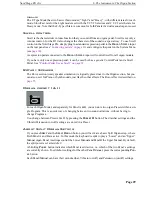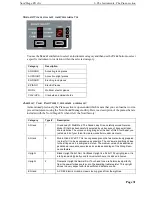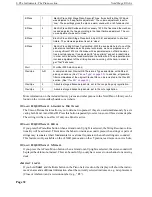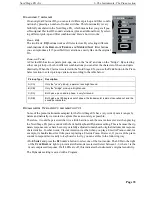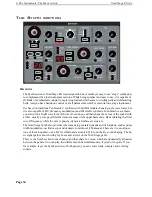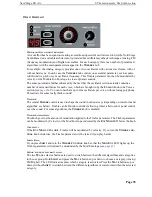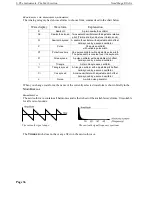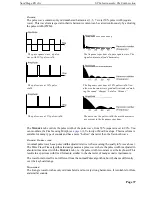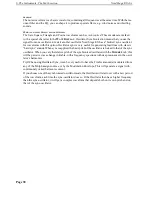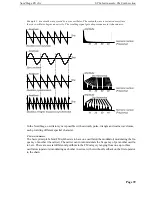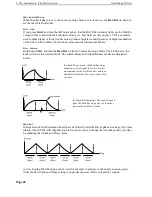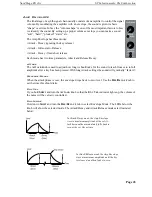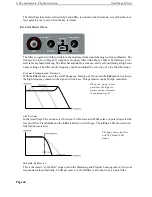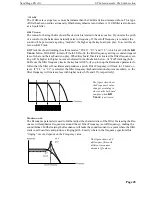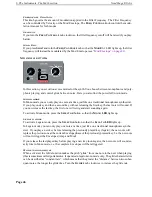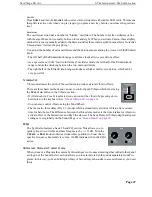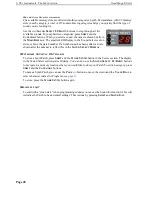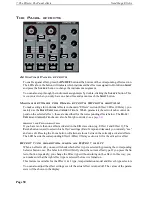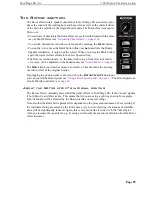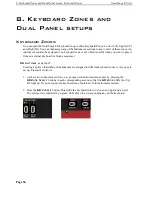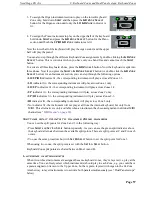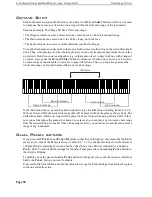
Nord Stage EX v6.x
6. The Instruments: The Synth section
Page 43
A
MP
E
NVELOPE
The final stage of a synth signal chain usually consists of an amplifier to control the signal
volume. By modulating the amplifier with an envelope, the sound is given its basic
“shape” over time. In fact, the “volume shape” is one of the most important factors to how
we identify the sound. By setting up a proper volume envelope you can make a sound
“soft”, “hard”, “plucked” “static” etc.
The Amp Envelope has three modes:
• Attack - Decay (ignoring the key release)
• Attack - full sustain - Release
• Attack - Decay - fixed short release
Each mode has two time parameters, Attack and Release/Decay.
A
TTACK
The
A
TTACK
knob is used to adjust how long it should take for the sound to reach from zero to full
amplitude after a key has been pressed. With long Attack settings the sound will gradually “fade in”.
R
ELEASE
/D
ECAY
When the attack phase is over, the envelope drops back to zero level. Use the
R
EL
/D
ECAY
knob to
set the time this should take.
E
NV
V
EL
If you hold
S
HIFT
and turn the
A
TTACK
knob so that the
E
NV
V
EL
indicator lights up, the volume of
the notes will be velocity controlled.
E
NV
M
ODE
Hold down
S
HIFT
and turn the
R
EL
/D
ECAY
knob to select Envelope Mode. The LEDs below the
knob will show the selected mode. The Attack/Decay and Attack/Release modes are illustrated
below:
In Attack/Decay mode, the Amp Envelope
rises to maximum amplitude at the set At-
tack time and then immediately falls back to
zero at the set Decay time.
In Attack/Release mode, the Amp Envelope
stays at maximum amplitude until the key
is released, and then fades to zero.

